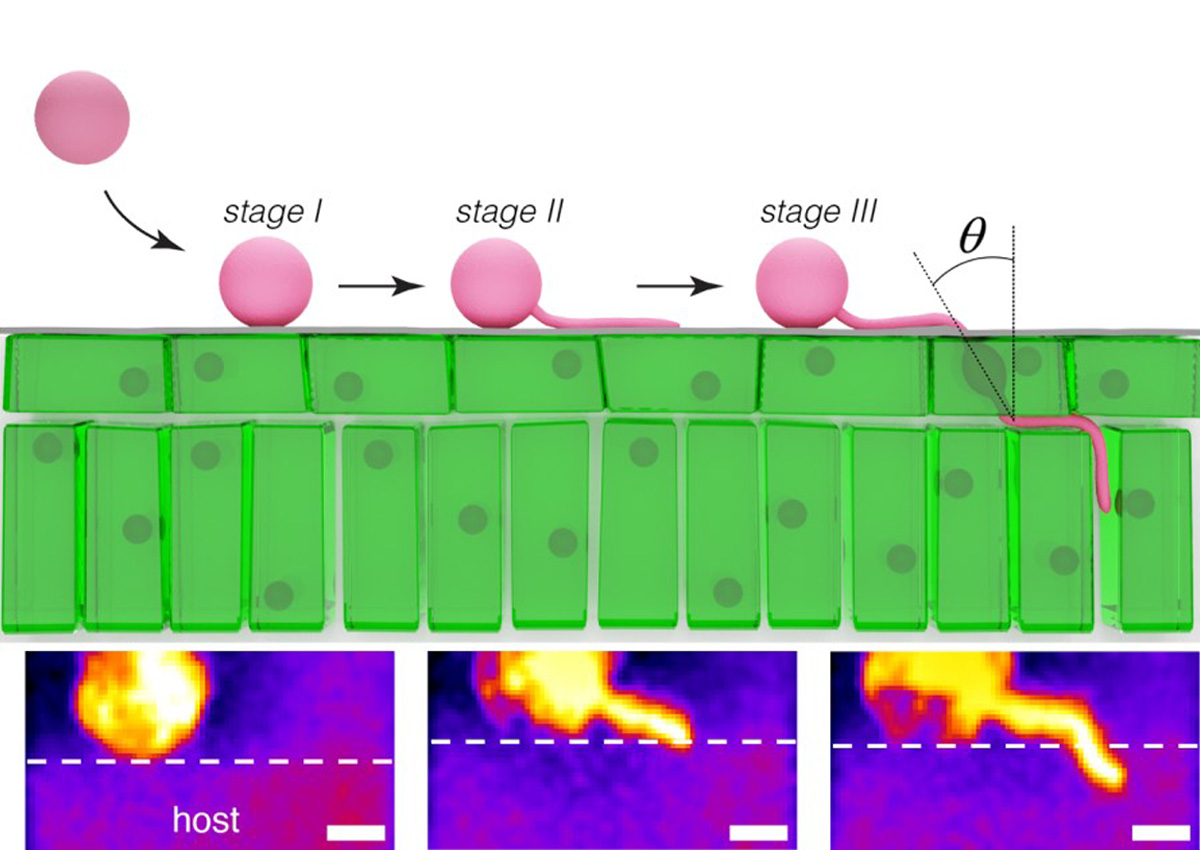
Wageningen Scientists Discover how Potato Blight Pathogen Penetrates Plants
July 7, 2021| |
The pathogen Phytophthora infestans that caused famine in Ireland and other parts of Western Europe in the 19th century is still a major threat to food production worldwide. For a long time, it was a mystery how this pathogen makes its way through the outer protective layer on the leaves of agricultural crops. Through a unique collaboration, researchers at Wageningen University & Research (WUR) have now found the answer to this question.
Annually, Phytophthora causes enormous damage to all kinds of crops including potatoes, tomatoes, aubergines, cocoa, peppers, soy, and palms. It causes approximately 6-7 billion euros in damage in potato cultivation alone. Fighting this pathogen remains difficult and research is being done to develop resistant crops. Another possibility in fighting Phytophthora is to prevent it from gaining access to a plant at all. Plants have protective layers that target burglars such as Phytophthora, yet this pathogen breaks through this layer and initiates the disease process in plants. WUR plant pathologists, cell biologists, and physicists worked together so the riddle could finally be solved.
Joris Sprakel, professor of Physical Chemistry and Soft Matter said they discovered that Phytophthora uses clever tricks to sharpen its tubular infection structure and then cut through the surface of the plant like a sharp knife. With this strategy, Phytophthora can infect its host without brute force and with minimal energy consumption. "This is the first time that this mechanism has been brought to light and a truly fundamental discovery," says Professor Sprakel.
For more details, read the article in WUR News.
| |
You might also like:
- Research Identifies Best Gene to Provide Potatoes Resistance Against Late Blight
- Field Trials Reveal Blight Resistant GM Potatoes
- Scientists Develop Late Blight Resistant Potato
Biotech Updates is a weekly newsletter of ISAAA, a not-for-profit organization. It is distributed for free to over 22,000 subscribers worldwide to inform them about the key developments in biosciences, especially in biotechnology. Your support will help us in our mission to feed the world with knowledge. You can help by donating as little as $10.
-
See more articles:
-
News from Around the World
- Can Gene Drive Eliminate Vector-borne Diseases?
- Researchers Combine Resistance Genes to Improve Wheat Yields
- Cow's Gut Microbes Can Degrade Three Types of Plastics
- Drought Tolerant Rice Comparatively Safe With Non-GM Counterpart
- Study Shows Information Beyond Genetic Code is Stored in Plant Sperm
- Wageningen Scientists Discover how Potato Blight Pathogen Penetrates Plants
-
Plant
- Russia's First Gene-Edited Calf Turns One
- Study Reveals Role of OsMTD2 in Rice Pollen Tube Elongation
- Scientist Introduces CRISPR 3.0 System for Highly Efficient Gene Activation in Plants
- Japanese Researchers Develop New Gene-Editing Tool to Create Non-GM Crops
- Scientists Propose Ethical Guidelines to Assess GM, GEd Organisms
-
Health
- Facemask Detects COVID-19 Virus in 90 Minutes
-
Read the latest: - Biotech Updates (December 17, 2025)
- Gene Editing Supplement (December 17, 2025)
- Gene Drive Supplement (February 22, 2023)
-
Subscribe to BU: - Share
- Tweet

